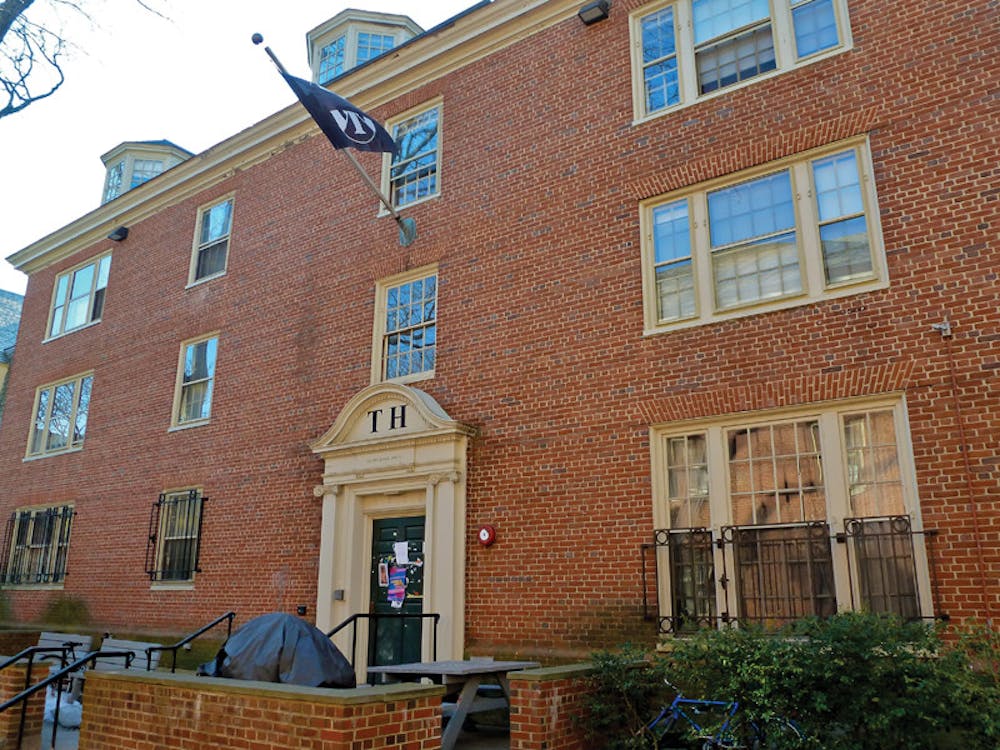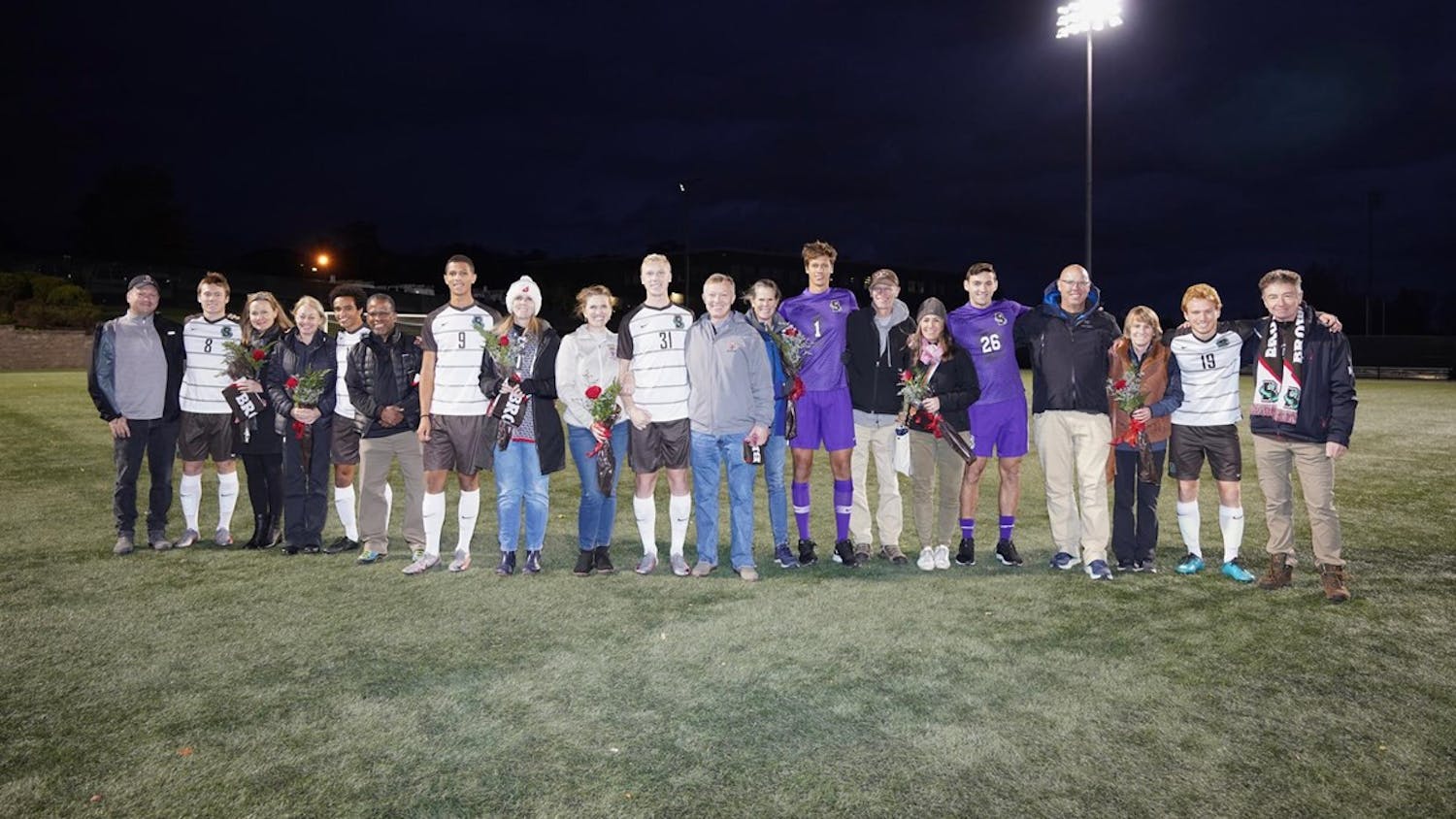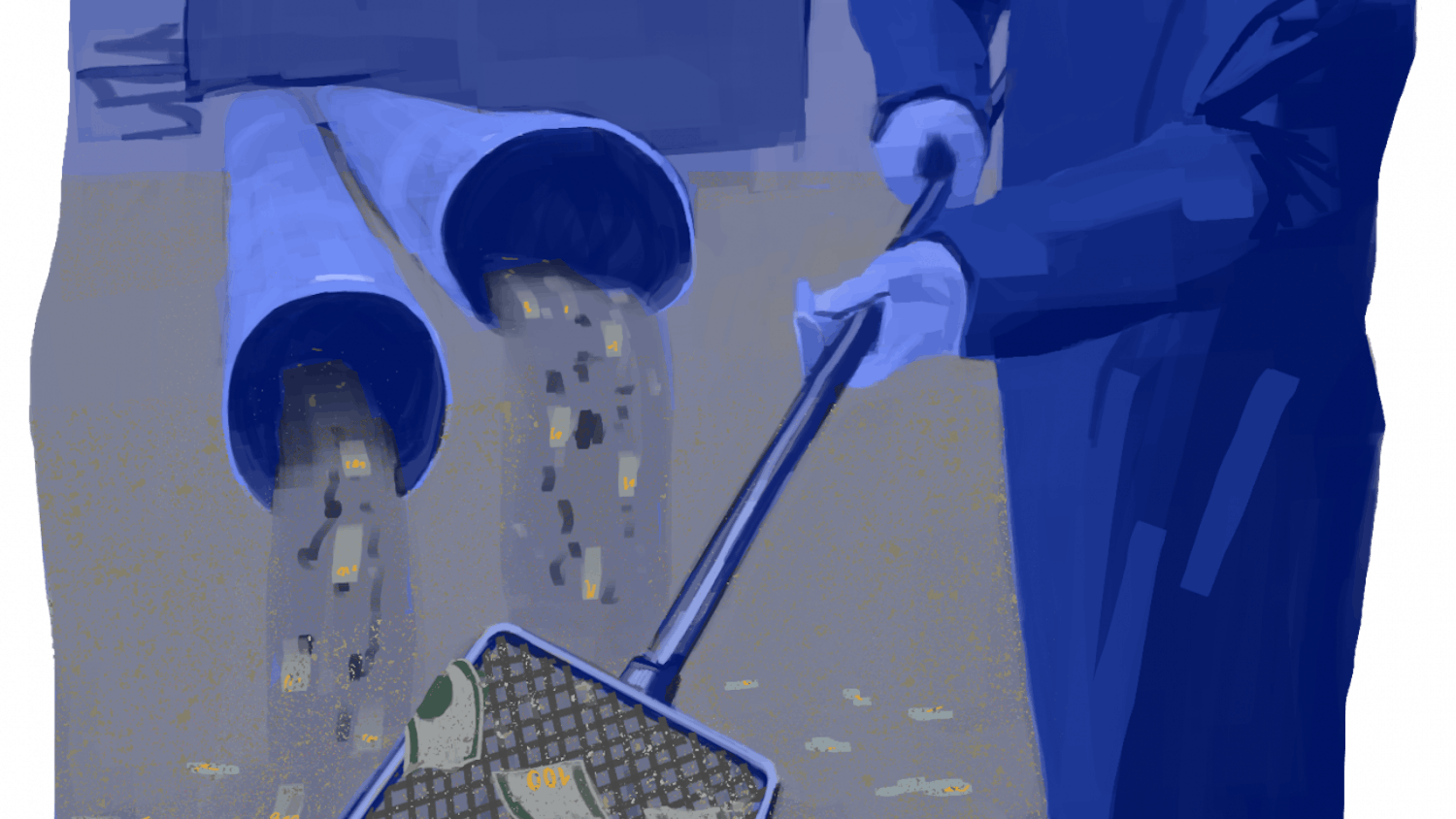The first in an occasional series of stories spotlighting the architectural and social history of spaces at Brown.
Ever since then-President Henry Wriston expanded on-campus residential facilities to increase the University’s prestige more than 60 years ago, the quirky Harkness House and the surrounding dormitories have been home and hub to student life.
Up until about 1950, students — particularly those in fraternities — lived off campus, said Robert Emlen, senior lecturer of American studies. Administrators were concerned about both young people living on their own and the subsequent lack of a distinct campus community, he said. In the 1920s, the University slowly began buying out the buildings, homes and businesses that existed on the blocks now known as Wriston Quadrangle, and by the 1950s, students started moving into the new complex.
The quad was designed entirely by the architectural company Perry, Shaw and Hepburn, which also helped John D. Rockefeller, Jr. 1897 restore Colonial Williamsburg, Emlen said. He added that Wriston was “keen” on maintaining Brown’s strength as a prestigious institution with a rich colonial past. At that time called “New Quad,” Wriston Quad was essentially designed in imitation of Colonial Williamsburg, Emlen said. On many levels, the design encouraged an integrated community with the dorms built close together, he added.
Wriston, a “firm believer in the fraternity system,” proposed in 1943 that students abandon their off-campus houses for on-campus living, room maintenance and dining services, according to the Encyclopedia Brunoniana. The proposal was initially met with some “opposition,” but students ultimately accepted and moved into the new dormitories when the quad was finished several years later.
Wriston used the quad, which was later named after him, as “a tool of social engineering,” creating an environment where students from different groups and backgrounds could live and eat together, according to Raymond Rhinehart’s ’62 “Brown University: The Campus Guide.” The nine dormitories and Sharpe Refectory are all arranged across “two closed greens” — Patriots and Hughes Courts.
Harkness House on Patriots Court has experienced significant turnover through the years. Initially home to a fraternity, Harkness later housed a “social dorm” when new program housing options emerged in the late 1980s and early 1990s, said Thomas Forsberg, associate director of residential life. Technology House moved in as a program group in the late 1990s, he added. Though Tech House has remained, the other half of Harkness has cycled through a variety of program housing, Forsberg said.
Alex Cevallos ’14, Tech House president, had much to share about the house’s history. Before Harkness became Tech House’s headquarters, Kappa Delta Upsilon, also known as Delta Upsilon during some years of its existence, was the fraternity that occupied Harkness, Cevallos said.
The other half of the house is now home to the sorority Kappa Delta and previously was occupied by the former program Art House as well as students unaffiliated with program housing, he said.
Though Social Dorm, which was based in Harkness until the late 1990s, spent relatively brief time in the space, the program’s members enjoyed hosting big events on Wriston, Cervallos said, adding that there is an old note on the Tech House computers: “Do not co-host events with social dorm.”
Harkness’ transition from fraternity home to program house may have come with a sinister underside.
“The reason there isn’t a frat here anymore is because there was a mysterious fire in the basement,” Cevallos said. He described the “cave,” a mysterious room in the Harkness basement with strange paintings on its walls that is now permanently locked. The pieces to the infamous Sciences Library Tetris prank are also stored there, he said.
Another locked door in the basement closes off an underground tunnel, said Audrey Lew ’14, a Tech House member. She added that the entrance was temporarily opened during Hurricane Sandy in October 2012 due to flooding. Primarily a maintenance tunnel, it is filled with pipes and covered in graffiti.
Another tunnel connecting Chapin House to the Ratty is permanently sealed, Cevallos said.
Living in Harkness has been “great for sophomore life,” said Jonah Cader ’16, adding that he appreciated Harkness’ unique features and relationship with the Wriston community.
Due to an editing error, a previous version of this article incorrectly stated the name of an encyclopedia containing information about President Henry Wriston's changes to residential life in the 1940s. It is the Encyclopedia Brunoniana, not the Encyclopedia Brunonia. The Herald regrets the error.

ADVERTISEMENT




